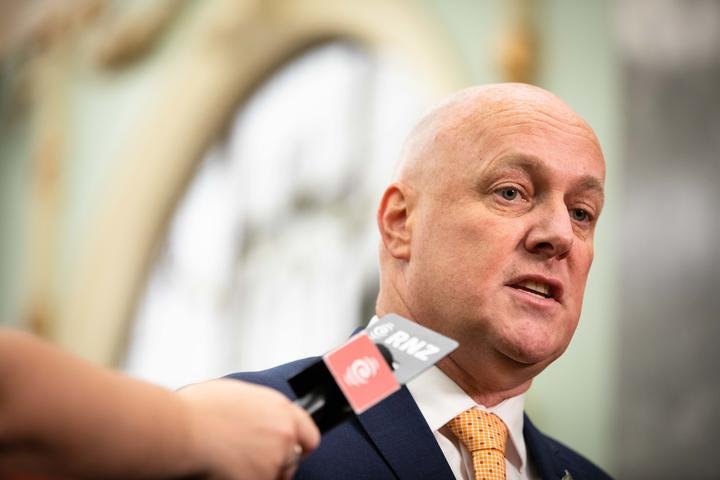Michael Cullen Address to EMA
Address to EMA Northern Division Annual General Meeting - Hon Dr Michael Cullen
Goldstar Room, Ellerslie Function Cenre, Ascot Avenue, Greenlane, Auckland
Thank you for inviting me to talk with you today.
Much has happened since I spoke to you last July at your Employment Relations Conference.
Since then, the Employment Relations Act - the focus of so much debate last year - has settled into place without much fuss.
We have delivered on every one of our election pledge card promises in order to help resort trust in the government and to set the scene for developing our longer term vision.
Since we took office we have proved that MMP and coalition politics can deliver smooth, steady government.
In the past year the government has done a lot of listening. Through forums and discussions with business, local government, Maori, the community sectors, education and research interests and the labour movement,
I have become increasingly convinced that a shared vision for our nation is the way forward to build greater prosperity and growth for us all.
For I strongly believe that in building a stronger economy and better society, success for some must not be bought at the expense of failure for others.
The government has a clear idea of where we want to go:
- New Zealand needs an economy that is less vulnerable to the vagaries and the long term decline of commodity-based production and trade;
- we want to move to a more sophisticated trade in goods and services;
- we want to use our brains, talent and institutional structures to turn New Zealand’s great ideas into great business ventures;
- we want to reward our people with well paid and interesting work; and
- we want to see New Zealand back in the top half of the OECD economic indicators, as we already are on most social indicators.
We see the New Zealand of the future as an export-oriented economy with more global companies operating from a New Zealand base and developing strong clusters around them.
We have made a great deal of progress in putting in place the building blocks for a 21st century economy. We are co-ordinating policies relating to innovation, talent and skills, investment and business growth, excellence in education, and science, research and development.
We know where we were going and how to get there. The stage has been set. New Zealand’s economy was performing far better than was anticipated, across a range of indicators, and - in the immortal words of the Reserve Bank - favourably out of sync with the rest of the world.
And then, without warning, the world changed.
With the attacks against America and the war against terrorism, in the short term, at least, the unknown became the unknowable.
New Zealanders were shocked and horrified by the events.
New Zealand immediately pledged support to the United States. We made clear our commitment to be part of a global coalition directed to combating terrorism in all its various manifestations.
But what of the economic implications?
Even prior to September 11 there were increasing signs that US growth was likely to remain weak for longer than many had expected.
And the prospect of an unsteady outlook was mirrored elsewhere, especially in Japan and the rest of Asia.
It is worth noting that the weaker than expected world growth already this year has not yet translated through to substantially weaker activity here in New Zealand.
There are a number of reasons for this. The stimulus to the export sector is now feeding into the domestic economy with increases in consumption, construction and investment in plant and equipment. Monetary conditions remain stimulatory, but inflationary pressures do not appear to be increasing. World commodity prices have held up despite the slow down in global activity.
What is not so widely agreed is the magnitude and timing of the impact on the New Zealand economy.
New Zealand is a trading nation. That is how we survive, and while we are certainly not immune to negative global developments, we do appear to be better placed to cope than we have done in some of the past periods of global slowdown. For example:
- The economy grew by 2 percent in the June quarter. Most industries recorded increases with the manufacturing sector leading the way with a 4.8 percent rise in activity;
- The current account deficit is at 4 percent of GDP the lowest it has been for 7 years;
- Unemployment has fallen to the lowest levels in 13 year - 5.2 percent;
- We have fiscal surpluses and government debt that is low by relative and historical standards;
- Global demand for New Zealand products is still reasonably good despite the slow down the world has experienced over the last year;
But even with these buffers in place, the international environment still poses a significant risk to the economic outlook going forward.
Opinion is divided as to how much New Zealand’s $13 billion tourism industry will fare as people around the world reassess international air travel.
At this stage it is too soon to make any firm predictions, but there is the prospect of any global decline in tourism being moderated by other factors, for instance; New Zealanders choosing to holiday at home, Australians reappraising holiday destinations and even south east Asians looking south rather than east when deciding where to holiday.
The Tourism Industry Association now maintains the overall net effect will be a 5 percent decrease in international visitors but warns those operators who are exposed to the rapidly declining markets like the US and Japan will obviously face a much larger decrease.
Where we see an immediate impact is in the decline in business confidence. This is to be expected given the continuing economic and political fallout from the terrorist attacks on the United States. Australia, too, has tumbled into negative territory. While the fall has been sharper here, in both countries it has been driven primarily by the deterioration in world growth prospects.
And it is worth stating again that the government will allow the fiscal stabilisers to work and we will not repeat the mistakes of the response to the Asian crisis when a fiscal contraction compounded the downturn.
But overall, I am confident that, insofar as the government can influence the economy, we are on track for getting the investment and economic environment right.
We have maintained a careful control of government spending. This, in turn, has maintained our reputation abroad as a responsible economic manager, and has taken some of the pressure off monetary policy - allowing the Reserve Bank to lower interest rates.
We have strengthened New Zealand’s capital markets by allowing the Government Superannuation Fund to invest in the share market,
by providing stronger protection for smaller shareholders and by establishing a venture capital investment fund.
We have encouraged new investment by using a “whole of government” approach to fast track required consents for new enterprises and by offering incentives where desirable.
We are helping new businesses get up and running and we are helping established firms grow through the programmes run by Industry New Zealand, and through an export credit guarantee scheme to assist firms develop new overseas markets.
One of the most important things this government has done, which is particularly significant for Auckland, is to introduce a series of initiatives to raise the skill levels of New Zealanders.
These include: a modern apprenticeships scheme, increased funding for industry training, larger quotas for skilled and business migrants, measures to reduce the cost of student loans, the reform of the tertiary education sector to make it more responsive to the needs of the economy and to reduce wasteful duplication of resources.
I hardly need tell you that the growing skills gap is a critical issue for Auckland. And if it is a problem for Auckland then it is a problem for the rest of the country.
Auckland’s economic and social health is central to the well-being of New Zealand; it is after all where around one-third of us live and, niggling rivalries aside, the rest of the country can bask in the glory of the fact that our largest city was voted seventh best in the world by an international survey looking at quality of life.
Let me take this opportunity to commend Alasdair Thompson for his work over the past year with Competitive Auckland to develop a strategy to attract, retain and grow businesses and talent - without losing the magic and ambiance that makes Auckland special.
I applaud Competitive Auckland’s goal to deliver a 5 percent per annum growth rate for the Auckland economy by focusing on six key industries for growth: tourism, food and beverage manufacturing, marine, IT&C, biotechnology and export education.
Competitive Auckland’s strategy is based on co-operation, affiliations and partnerships between the business community, academic institutions and central and local government.
Competitive Auckland identified that a predominantly laissez faire approach to the New Zealand economy has so far failed to remedy Auckland’s declining competitiveness - that holds true for the rest of the country as well.
Partnerships are a central pillar in the government’s economic approach. For a generation, central government has been the missing partner in economic development.
Indeed, ours is the lesson of every small economy around the world. No small economy has thrived under a hands-off regime. You only have to look at the successful forward economies - whether Singapore, Finland or Ireland - to see that it is not heavy handed intervention but rather a smarter, more targeted level of government involvement and good working partnerships that make a difference.
Auckland is already reaping some benefits of partnerships between communities of interest.
This month saw further progress between the Crown and Tranz Rail in the negotiations over the Auckland rail corridor and we expect to conclude an agreement by early December that will allow the development of rail passenger transport as part of an integrated solution to Auckland traffic congestion problems.
And here again we find that Auckland’s problems are in fact New Zealand’s. It is estimated that Auckland’s traffic congestions cost the country $800 million each year. Getting traffic moving is essential to the economy.
Work has started on the North Shore bus lane. Short but strategic, the bus lane represents a fast-tracked first step in a five year upgrade of passenger transport in the North Motorway corridor. The next step will be the $35 million upgrade of the Esmonde Road interchange.
The government “s patronage funding scheme has already led to a significant increase in the numbers of Aucklanders using public transport. The Auckland Regional Council reports that in the last year over 7 percent more people are choosing to take buses, trains and ferries. That amounts to almost 3 million passengers who are not in cars on Auckland roads.
Let me turn now to the recently release Tax Review and its possible implications on business and investment in New Zealand.
The recommendations in the final report that I find of greatest practical interest are in the areas of international tax, the taxation of different types of entities and the taxation of different savings vehicles, as these have the potential to stimulate economic growth.
International taxation is especially pertinent, given the increased mobility of capital, individuals and businesses. Although tax is not the main driver of decisions on where to locate investment, it can exert some influence at the margin.
We need to keep our foreign investment laws under constant review. Many other countries around the world now have differential tax systems.
We need to attract new investment and new capacity into New Zealand and despite the fact that the total burden of corporate tax in New Zealand is not high by international standards, it is perhaps the headline rate that investors tend to look at.
If we do not go down the road of a differential rate we will still have to find an alternative route which achieves the same desirable end - to remove the current signals in the tax system which create perverse incentives for both New Zealand and overseas investors.
That said, I agree with the review’s comments that governments need to be cautious before they depart from the broad base, low rate approach to taxes, even when pursuing increases in international competitiveness.
The review has recommended reducing the tax burden on foreign investment into New Zealand, especially direct investment. It has also looked at ways of targeting new foreign investment.
I find this an interesting contrast to those who call for a wholesale cut in the company tax rate. As the review notes, the company tax rate can impact quite differently on residents and non-residents.
For residents who invest in New Zealand companies, reducing the company tax rate can have a limited effect, due to our imputation system: the reduction in company tax is simply offset by increased taxes in the wash-up.
For non-residents, the impact can be much more immediate and far-reaching, since lower taxes on non-residents can lead to a lower cost of capital for all New Zealand firms.
It also has an obvious attraction to me as Finance Minister as cutting the tax for non-residents is far less expensive to the revenue than cutting the rate to everyone.
Both the review and the government recognise that their proposals give rise to a number of issues that will require further work. For example, how could we ensure that a lower tax rate would apply only to new activities?
In the outbound investment area, the review has captured the conundrum perfectly.
I quote: “On the one hand, New Zealand does not want to induce our most mobile taxpayers to consider moving from New Zealand. On the other hand, New Zealand does not wish to adopt a built in tax incentive that causes people who remain in New Zealand to see a tax advantage in investing off shore rather than in New Zealand.
“But it is precisely this type of system that produces a tax incentive to invest off shore that is the international standard.”
The review’s preferred solution is that investment in listed shares and securities be taxed at a standard risk-free rate of return, no matter the country of investment.
I am interested in this idea because it has the potential to make the relevant tax rules simpler, fairer and more effective.
I have previously said that the government will be examining the Foreign Investment Fund regime. The review’s recommendations are wider reaching than what I have commissioned from officials, so it looks like next year will see some major work again on these issues.
The taxation of entities is another important area for further consideration.
Companies, trusts and partnerships are the most common form of taxable entities, and they all have different tax rules applying to them. The review favours reducing the number of different tax treatments, thus reducing the influence of tax in the choice of investment entity.
Decisions over the choice of entity should be based on what best suits the business, rather than tax.
I note that the review is not suggesting wholesale change now but that future tax reform should be guided by the distinction between closely held and widely held entities.
Related to this is the taxation of savings and investment - an area in which I am particularly interested. At present, different savings vehicles attract different tax treatments which can distort savings decisions.
The review has recommended that savings and investment entities be taxed in the same way, applying the standard risk-free rate of return recommended for foreign investment funds.
The advantage I see in this approach is that it would introduce some much-needed fairness and neutrality into what is now a highly uneven playing field. Ideally, New Zealanders’ savings decisions should be driven by the return on investment rather than tax considerations.
The taxation of savings vehicles is, of course, quite distinct from the issue of tax incentives as a way of stimulating greater levels of saving, or of converting savings from short to longer term forms.
Suffice it to say that just as I remain unconvinced by officials’ view on this, I am not convinced by the review’s pronouncements on it either. Further work is needed before I am prepared to concede that there is nothing to be done to encourage New Zealanders, through the taxation regime, to save more and invest in our businesses, our industries and our future.
Finally, I would like to offer a few brief comments on the government’s response to the Royal Commission report on Genetic Modification.
The GM debate is a passionate one and a universal consensus was never a realistic outcome. But I believe the government has come up with a safe and pragmatic result for New Zealand without closing the doors on science.
We have endorsed the vast majority of the Royal Commission's findings. But we have come to different conclusions on the sequencing of their implementation.
The Royal Commission recommendations included further research on the impacts of GM organism release, economic and strategic analysis, and amendments to the Hazardous Substances and New Organisms Act.
But the commission did not advise the Government to constrain the release of genetically modified material pending the completion of that work. Instead it advised us to call in the first GM crop application. That recommendation we have rejected.
The Government has decided instead on a two year constraint period on release. Exemptions will be allowed for applications for releases providing direct benefits to human health or animal health.
The purpose of this two-year constraint period is to allow time for that further research and institutional fine-tuning the Royal Commission recommended.
At the end of that period we will have an updated and extended framework for the management of GM research and organisms. Applications for contained research or release will again be handled by the Environmental Risk Management Authority, under that improved framework.
For the purposes of clarity, research in containment will continue, be it in a laboratory, a field or a glasshouse. The only difference is that the destruction or removal of all heritable material at the conclusion of the research ¡X a currently optional condition that ERMA has universally applied ¡X will be required by law.
Our economy is founded on primary production. GM technologies are already a valuable tool for the primary sector in the continual quest for improved products and productivity.
I am unaware of any existing or immediately prospective research in New Zealand that will not be able to proceed within the constraints announced today. New Zealand will keep its competitive edge as a developer of high-quality biotechnology and biomedical research.
We will manage the risks of GM technology cautiously and wisely - preserving our options for the future prosperity of New Zealand.
Thank you for your time today.


 Gordon Campbell: On The Coalition’s Awful, Not Good, Very Bad Poll Results
Gordon Campbell: On The Coalition’s Awful, Not Good, Very Bad Poll Results Koi Tu - The Centre for Informed Futures: If Not Journalists, Then Who?
Koi Tu - The Centre for Informed Futures: If Not Journalists, Then Who? FIRST Union: May Day, The Biggest Threat To NZ Workers In 2024 Is Our Government
FIRST Union: May Day, The Biggest Threat To NZ Workers In 2024 Is Our Government Green Party: New Unemployment Figures Paint Bleak Picture
Green Party: New Unemployment Figures Paint Bleak Picture  Labour Party: National Should Heed Tribunal Warning And Scrap Coalition Commitment With ACT
Labour Party: National Should Heed Tribunal Warning And Scrap Coalition Commitment With ACT Government: Saves Access To Medicines
Government: Saves Access To Medicines Office of the Speaker: Law And Order, Finance, And Defence A Focus For Ukrainian Parliamentary Delegation To NZ
Office of the Speaker: Law And Order, Finance, And Defence A Focus For Ukrainian Parliamentary Delegation To NZ


